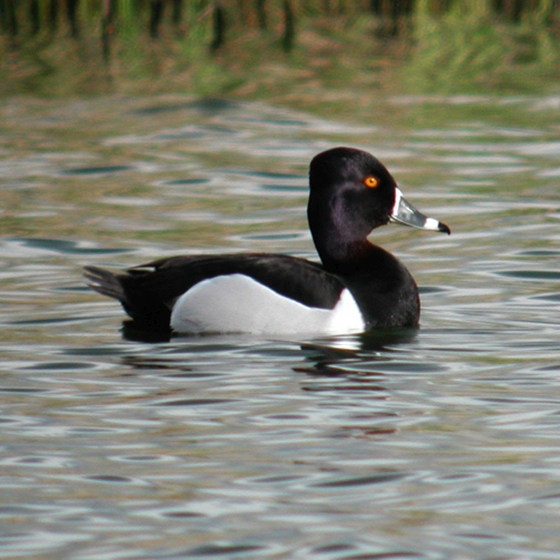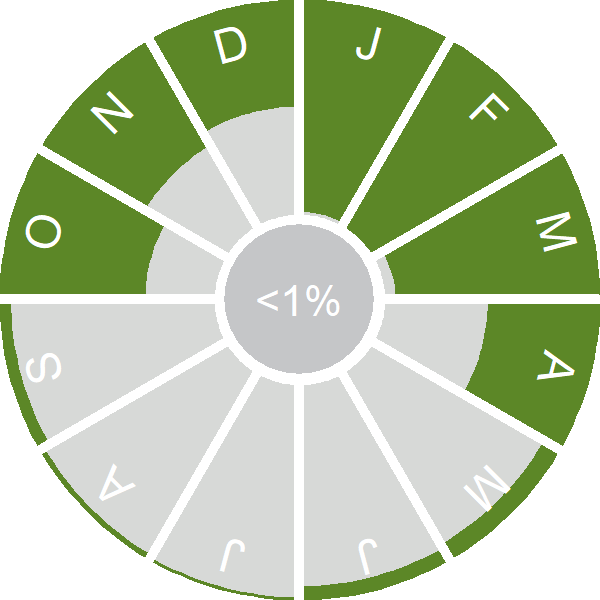Ring-necked Duck

Introduction
A rare, but regular, visitor from North America, with many individuals apparently re-appearing at the same site in multiple years. The pattern of occurrence is complicated by frequent escapes from wildfowl collections

Key Stats
Status and Trends
Conservation Status
Population Change
Population trends of this scarce species are not routinely monitored.
Distribution
This species is a rare vagrant and was recorded during Bird Atlas 2007–11 as shown on the map.
Occupied 10-km squares in UK
or view it on Bird Atlas Mapstore.
or view it on Bird Atlas Mapstore.
Distribution Change
This vagrant has been recorded in several atlases so we have been able to map distribution changes. However, as a rarity these may not show a consistent pattern of change.
Change in occupied 10-km squares in the UK
or view it on Bird Atlas Mapstore.
or view it on Bird Atlas Mapstore.
Seasonality
Ring-necked Duck is a scarce vagrant, usually detected in winter.
Weekly pattern of occurrence
The graph shows when the species is present in the UK, with taller bars indicating a higher likelihood of encountering the species in appropriate regions and habitats.

Movement
Britain & Ireland movement
Foreign locations of birds ringed or recovered in Britain & Ireland
Dots show the foreign destinations of birds ringed in Britain & Ireland, and the origins of birds ringed overseas that were subsequently recaptured, resighted or found dead in Britain & Ireland. Dot colours indicate the time of year that the species was present at the location.
- Winter (Nov-Feb)
- Spring (Mar-Apr)
- Summer (May-Jul)
- Autumn (Aug-Oct)

Biology
Survival and Longevity
Survival is shown as the proportion of birds surviving from one year to the next and is derived from bird ringing data. It can also be used to estimate how long birds typically live.
View number ringed each year in the Online Ringing Report.
Classification, names and codes
Classification and Codes
- Order: Anseriformes
- Family: Anatidae
- Scientific name: Aythya collaris
- Authority: Donovan, 1809
- BTO 2-letter code: NG
- BTO 5-letter code: RINDU
- Euring code number: 2000
Alternate species names
- Catalan: morell de collar
- Czech: polák proužkozobý
- Danish: Halsbåndstroldand
- Dutch: Ringsnaveleend
- Estonian: lannuvart
- Finnish: amerikantukkasotka
- French: Fuligule à collier
- German: Ringschnabelente
- Hungarian: örvös réce
- Icelandic: Hringönd
- Irish: Lacha Mhuinceach
- Italian: Moretta dal collare
- Latvian: gredzenpile
- Lithuanian: žiedasnape antis
- Norwegian: Ringand
- Polish: czerniczka
- Portuguese: caturro
- Slovak: chochlacka obojková
- Slovenian: ovratniška cmica
- Spanish: Porrón acollarado
- Swedish: ringand
- Welsh: Hwyaden Dorchog

